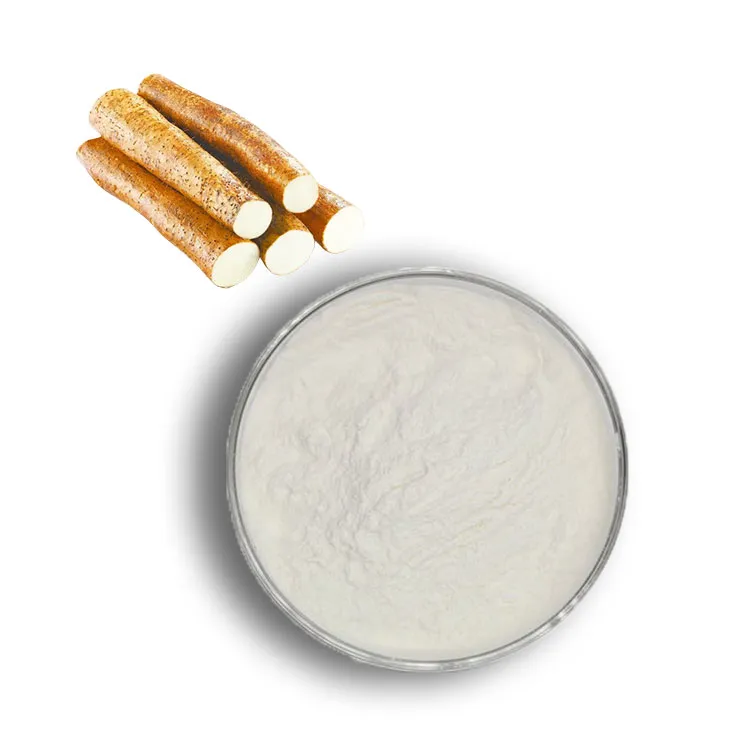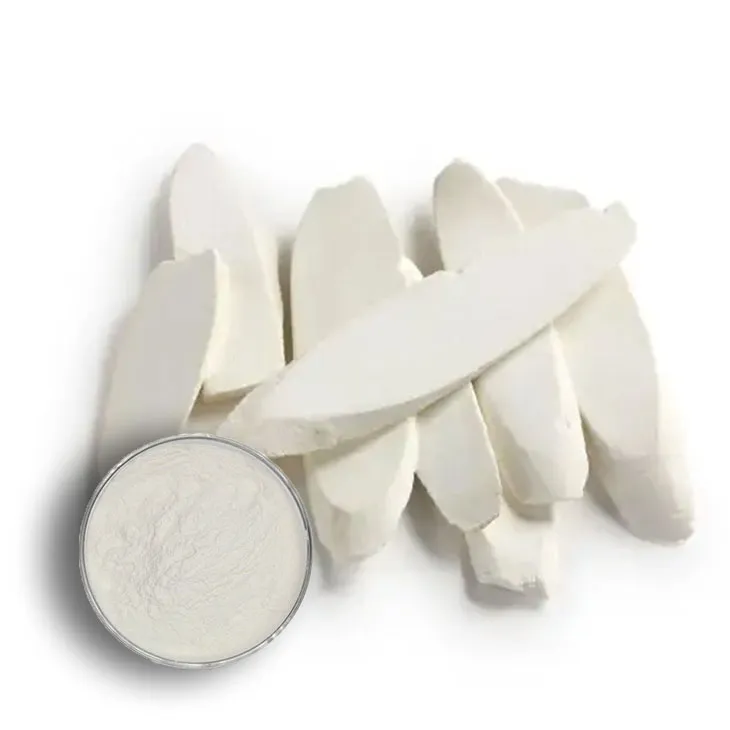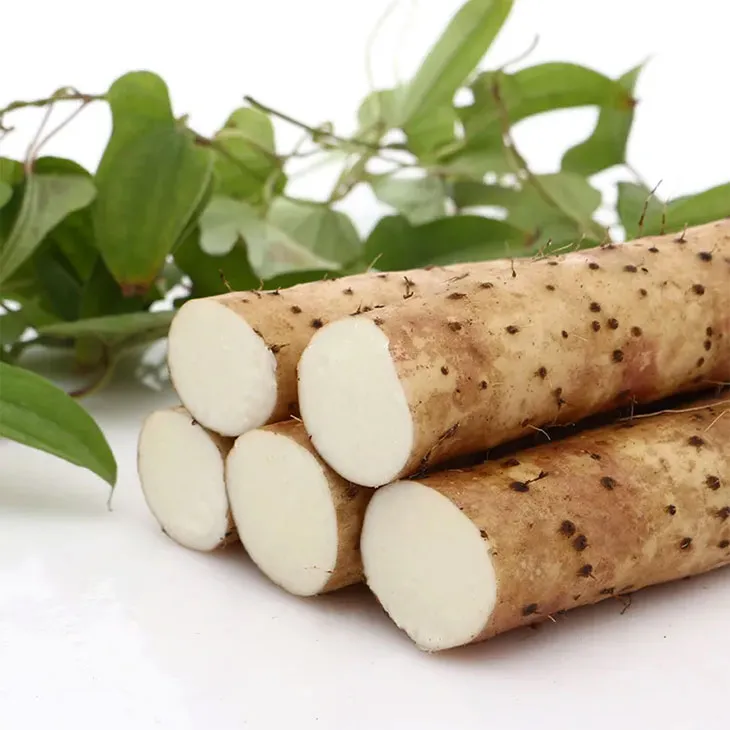- 0086-571-85302990
- sales@greenskybio.com
The process of extracting yam dopamine from yam extract.
2024-11-26

1. Introduction to Yam
Yam is a tuberous root vegetable that has been used in traditional medicine and cuisine in many cultures. It is a rich source of various bioactive compounds, including yam dopamine. Yams belong to the Dioscoreaceae family and are known for their starchy texture and unique flavor. Different species of yams may vary in their chemical composition, but they generally contain a range of nutrients such as carbohydrates, proteins, vitamins, and minerals. Yam dopamine, in particular, has attracted significant attention due to its potential biological activities and possible applications in the fields of medicine, cosmetics, and food.

2. Yam Extract Preparation
2.1 Harvesting and Cleaning
The first step in obtaining Yam Extract is the proper harvesting of yams. Yams are typically harvested when they reach maturity, which can be determined by factors such as size, skin color, and texture. After harvesting, they need to be thoroughly cleaned to remove any dirt, soil, or debris. This is important as contaminants can interfere with the extraction process and affect the quality of the final extract.2.2 Drying and Grinding
Once the yams are clean, they can be dried. Drying can be achieved through various methods, such as air - drying, sun - drying, or using a drying oven. Air - drying and sun - drying are more traditional methods, while a drying oven provides more controlled drying conditions. After drying, the yams are ground into a fine powder. This increases the surface area, which is beneficial for the subsequent extraction process.
3. Extraction Techniques
3.1 Solvent Extraction
Solvent extraction is one of the most common methods for extracting yam dopamine from Yam Extract. Different solvents can be used, depending on the solubility of yam dopamine and other components in the yam. Common solvents include ethanol, methanol, and water. Ethanol is often preferred as it can effectively extract the bioactive compounds while being relatively safe and easy to handle. In solvent extraction, the yam powder is mixed with the solvent in a suitable ratio. For example, a ratio of 1:10 (yam powder: solvent) may be used. The mixture is then stirred or shaken for a certain period, usually several hours to overnight. This allows the yam dopamine to dissolve in the solvent. After that, the mixture is filtered to separate the liquid extract from the solid residue.3.2 Supercritical Fluid Extraction
Supercritical fluid extraction (SFE) is a modern and more advanced extraction technique. In this method, a supercritical fluid, usually carbon dioxide (CO₂), is used as the extraction solvent. The supercritical state of CO₂ occurs when it is subjected to specific temperature and pressure conditions. Supercritical CO₂ has properties similar to both a gas and a liquid, which makes it an excellent solvent for extracting bioactive compounds. The advantage of SFE is that it can provide a more selective extraction, resulting in a purer extract with fewer impurities. Moreover, since CO₂ is a non - toxic and environmentally friendly gas, it is a more sustainable option compared to some traditional solvents. However, the equipment for SFE is more expensive and requires more complex operation.
4. Challenges in the Extraction Process
4.1 Impurity Removal
One of the major challenges in extracting yam dopamine from yam extract is the removal of impurities. Yams contain a variety of other compounds such as polysaccharides, proteins, and lipids, which can contaminate the yam dopamine extract. These impurities can affect the purity and quality of the final product. For example, proteins can cause emulsification during extraction, making it difficult to separate the extract from the residue. To remove impurities, various purification techniques can be used. Filtration is a simple and commonly used method. By using different pore - sized filters, larger particles such as insoluble polysaccharides can be removed. Another method is chromatography, which can separate compounds based on their different physicochemical properties. For example, high - performance liquid chromatography (HPLC) can be used to purify yam dopamine by separating it from other closely related compounds.4.2 Yield Improvement
Improving the yield of yam dopamine extraction is also a significant challenge. The yield can be affected by various factors such as the extraction method, the quality of the yam raw material, and the extraction conditions. For solvent extraction, the choice of solvent and its concentration can have a great impact on the yield. If the solvent is not optimal, it may not be able to fully extract the yam dopamine from the yam powder. Additionally, the extraction time and temperature also play important roles. Longer extraction times may increase the yield, but it may also lead to the degradation of yam dopamine at higher temperatures. To improve the yield, optimization of these extraction parameters is necessary. This can be achieved through experimental design and analysis, such as using response surface methodology to find the best combination of extraction conditions.
5. Possible Solutions
5.1 Combined Extraction and Purification Methods
To overcome the challenges of impurity removal and yield improvement, combined extraction and purification methods can be employed. For example, a two - step extraction process can be designed. In the first step, a solvent with a relatively wide extraction range can be used to extract as much yam dopamine as possible from the yam powder. Then, in the second step, a more selective purification method such as chromatography can be applied to remove impurities and further purify the extract. This combination can not only improve the purity of the yam dopamine extract but also increase the overall yield.5.2 Optimization of Extraction Conditions
As mentioned earlier, optimizing extraction conditions is crucial for improving the yield. Through careful study of the effects of factors such as solvent type, concentration, extraction time, and temperature, the optimal extraction conditions can be determined. For example, if ethanol is used as the solvent, experiments can be carried out to find the optimal ethanol concentration (e.g., 50 - 80%) that can balance between high - yield extraction and low - cost operation. Similarly, the extraction time can be optimized to ensure maximum extraction of yam dopamine without causing significant degradation. Temperature control is also important, and a relatively low - temperature extraction (e.g., 30 - 50°C) may be beneficial to preserve the stability of yam dopamine.6. Conclusion
The extraction of yam dopamine from yam extract is a complex process that involves multiple steps and techniques. Understanding the properties of yam, choosing the appropriate extraction method, and addressing the challenges of impurity removal and yield improvement are all essential for obtaining high - quality yam dopamine extract. With the development of modern extraction technologies and continuous research on yam, it is expected that more efficient and sustainable extraction processes will be developed in the future, which will further promote the application of yam dopamine in various fields.
FAQ:
What are the main components in yam extract?
Yam extract typically contains various components. Besides yam dopamine, it may have polysaccharides, proteins, lipids, and other bioactive substances. These components may have different properties and functions, and during the extraction of yam dopamine, it is necessary to separate it from other components effectively.
Which modern extraction technologies are suitable for extracting yam dopamine?
Some modern extraction technologies can be applied. For example, supercritical fluid extraction is a relatively advanced method. It uses supercritical fluids, usually carbon dioxide, which has good solubility and selectivity, enabling efficient extraction of yam dopamine. Another is ultrasonic - assisted extraction. Ultrasonic waves can break cell walls and enhance the mass transfer process, facilitating the extraction of yam dopamine from the yam extract.
How to effectively remove impurities during the extraction of yam dopamine?
There are several ways to remove impurities. One common method is chromatography, such as column chromatography. Different substances have different affinities for the stationary phase in the column, so yam dopamine can be separated from impurities. Another approach is filtration. Using membranes with appropriate pore sizes can filter out larger particles and some unwanted substances. Additionally, precipitation methods can also be used. By adjusting the pH or adding certain precipitants, some impurities can be made to precipitate out while leaving yam dopamine in the solution.
What are the key factors affecting the yield of yam dopamine extraction?
The key factors are numerous. The extraction method itself plays a crucial role. As mentioned before, different extraction technologies have different extraction efficiencies. The quality and type of yam used for extraction also matter. Yams with a higher initial content of yam dopamine are more likely to yield a higher amount of the target compound. Moreover, factors such as extraction time, temperature, and solvent used can all impact the yield. Longer extraction times may increase the yield up to a certain point, but excessive time may lead to degradation of yam dopamine. The appropriate temperature can enhance the solubility and mass transfer, but too high a temperature may also cause damage to the compound. The choice of solvent affects the solubility of yam dopamine and its ability to separate from other components.
What are the potential applications of yam dopamine?
Yam dopamine has several potential applications. In the field of medicine, it may have antioxidant properties, which could potentially be used in the development of drugs or health products to combat oxidative stress - related diseases. In the cosmetic industry, it may be used in skincare products due to its potential beneficial effects on the skin, such as anti - aging. Additionally, in the food industry, it may be explored as a natural antioxidant additive to preserve food quality and extend shelf life.
Related literature
- Extraction and Characterization of Bioactive Compounds from Yam: A Review"
- "Modern Extraction Techniques for Phytochemicals: A Focus on Yam"
- "The Role of Yam Dopamine in Health and Its Potential Industrial Applications"
- ▶ Hesperidin
- ▶ Citrus Bioflavonoids
- ▶ Plant Extract
- ▶ lycopene
- ▶ Diosmin
- ▶ Grape seed extract
- ▶ Sea buckthorn Juice Powder
- ▶ Fruit Juice Powder
- ▶ Hops Extract
- ▶ Artichoke Extract
- ▶ Mushroom extract
- ▶ Astaxanthin
- ▶ Green Tea Extract
- ▶ Curcumin
- ▶ Horse Chestnut Extract
- ▶ Other Product
- ▶ Boswellia Serrata Extract
- ▶ Resveratrol
- ▶ Marigold Extract
- ▶ Grape Leaf Extract
- ▶ New Product
- ▶ Aminolevulinic acid
- ▶ Cranberry Extract
- ▶ Red Yeast Rice
- ▶ Red Wine Extract
-
Pomegranate Extract
2024-11-26
-
Uridine-5'-monophosphate Disodium salt
2024-11-26
-
Astaxanthin
2024-11-26
-
Stevia Extract
2024-11-26
-
Oyster Mushroom Extract Powder
2024-11-26
-
Shikonin
2024-11-26
-
Tormentil Extract
2024-11-26
-
Black Pepper Extract
2024-11-26
-
Kelp Extract Powder
2024-11-26
-
Beetroot Powder
2024-11-26





















